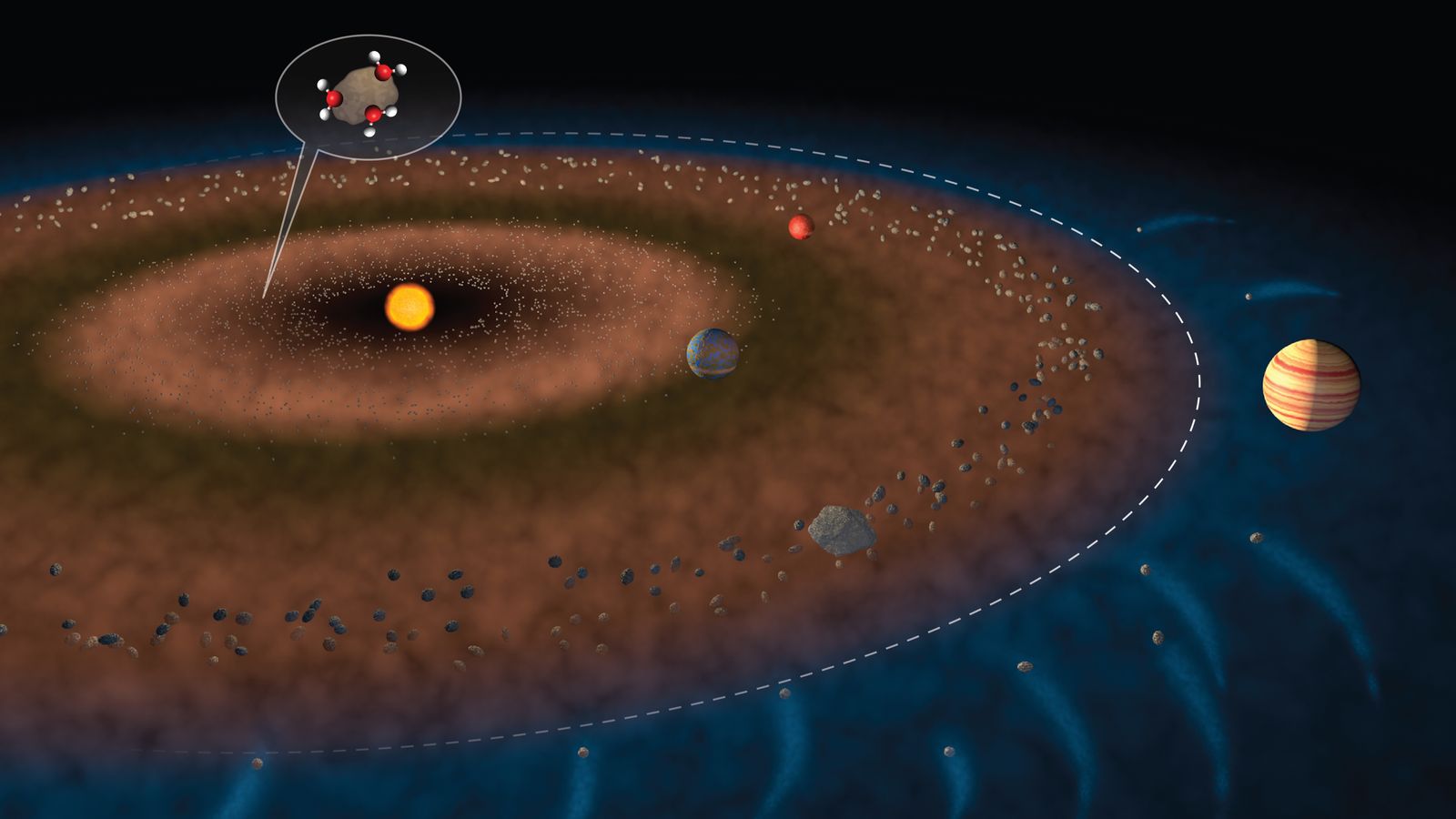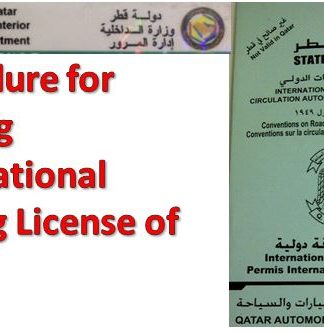Melted meteorites were thought to be a source of Earth’s water – a new study says otherwise
A research team has concluded that water was instead likely delivered to Earth via unmelted meteorites. An example would be the Winchcombe meteorite, which fell on the Gloucestershire town in 2021.
Wednesday 15 March 2023 16:00, UK
CREDIT: Jack Cook/Woods Hole Oceanographic Institution
The dashed white line in this illustration shows the boundary between the inner solar system and outer solar system, with the asteroid belt positioned roughly in between Mars and Jupiter. A bubble near the top of the image shows water molecules attached to a rocky fragment, demonstrating the kind of object that could have carried water to Earth
Image:
Some of the studied meteoroids came from the inner solar system – the dotted line marks the boundary between the inner and outer systems. The bubble illustrates how a meteoroid can carry water. Pic: Jack Cook/Woods Hole Oceanographic Institution
Why you can trust Sky News
Melted meteorites were not the source of the Earth’s huge quantities of water, researchers have found.
Previous studies had suggested that the once-liquid space rocks were a source of the planet’s H20.
But new findings show that they actually have extremely low water content; in fact, they are among the driest extraterrestrial objects ever measured.
Melted meteorites are so-called because they consist of a rock called achondrite which was formed after objects collided to form the Solar System’s early proto-planets, many of which had a crust and a molten core, but which later broke up, or had bits chipped off them, releasing new objects that began travelling through space.
Professor Megan Newcombe, of the University of Maryland, said the findings of the study has changed not just the understanding of how life is supported here on Earth, but potentially on other planets too.
“Water is considered to be an ingredient for life to be able to flourish,” she said.
“So as we’re looking out into the universe and finding all of these exoplanets, we’re starting to work out which of those planetary systems could be potential hosts for life.
“In order to be able to understand these other solar systems, we want to understand our own.”
How was the discovery made?
Prof Newcombe’s team analysed melted meteorites that had been floating in space 4.5 billion years ago.
Some came from the inner solar system, where Earth is and where conditions are generally assumed to have been warm and dry, while others came from the colder, icier outer reaches.
As they only fell to Earth recently, this was the first time their atomic makeup was measured – including levels of magnesium, iron, calcium, and silicon.
Analysing water content, however, is especially difficult. This is because any water on the sample’s surface, or which gets inside the equipment, could be detected and taint the results.
To reduce this potential for contamination, the melted meteorite samples were placed under a “turbo pump” (or a low temperature vacuum oven) for more than a month.
The team found that water comprised less than two millionths of their mass.
Study co-author Sune Nielsen said: “As soon as meteorites melt, there is no remaining water.”
More like this:
Telescope snaps picture of dying star
NASA tracking new asteroid that could impact Earth
Meteoroid is seen over Brighton0:48
Play Video – Asteroid spotted over UK and France
Asteroid spotted over UK and France
What do the findings mean?
It had been assumed that objects from the outer solar system were rich in water, given the conditions.
As such, they were thought to have been a key component of why water makes up 71% of the Earth’s surface.
Prof Newcombe’s team has concluded that water was instead likely delivered to Earth via unmelted meteorites. An example would be the Winchcombe meteorite, which fell on the Gloucestershire town in 2021.
Studies have found that the rock that fell in Winchcombe, which consists of a rock called carbonaceous chondrite, contains approximately 11% extra-terrestrial water (by weight), most of which is locked-up in minerals that formed during chemical reactions between fluids and rocks on its parent asteroid, according to the Natural History Museum.
The study about the melting meteorites has been published in the journal Nature.
Related Topics
Space






























